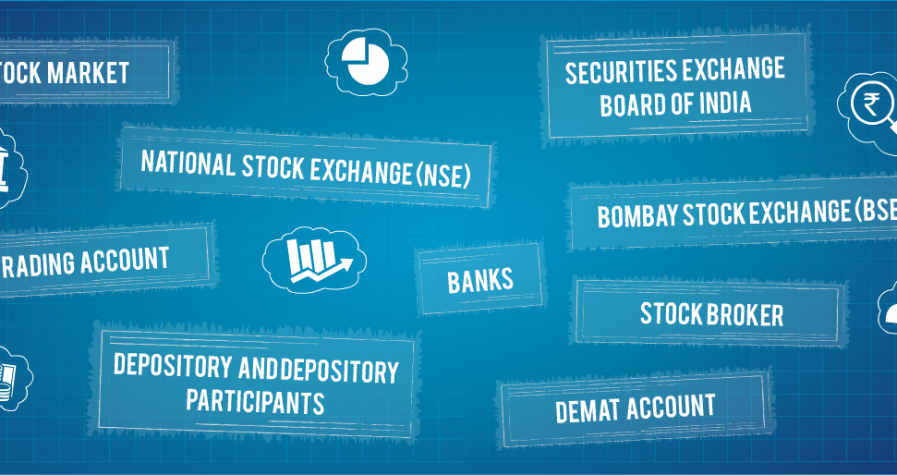What is Profitable Self-Directed Investing?
(Updated Oct. 21)

You’ll pay lower fees if you choose some online broker but you have to do everything yourself
Self-directed investing also known as do-it-yourself investing is when you as an investor build and manage your own investment portfolios. That means you manage your investment strategy on your own. You are the one who decides which investments you want to buy or sell, and when. Self-directed investor ordinarily uses some online trading platform to make the trade. These investors prefer to forego the advice of an investment adviser since they are do-it-yourself types of investors. If you are a DIY type, here some things you have to take into consideration. Also, you’ll need to follow some principles.
Famous investor, Warren Buffet said: “Investing is not a game where the guy with the 160 IQ beats the guy with 130 IQ.”
This is particularly true if you know that self-directed investing is very simple. To be honest it isn’t the easiest one but also, it isn’t a terrifying type of investing.
Anyone who has done simple but serious research with due diligence can count to outperform the stock market. By self-directed investing, you could do that over a long period if you know how to create an investment portfolio capable of beating the market.
Advantages of self-directed investing
First of all, you’ll pay lower fees if you choose some online broker. That will allow you to trade with lower commissions and fees. This comes from the fact that in self-directed investing you don’t need any advice or advisor since you choose to be a DIY type of investor. Further, you can make your own research, and, based on it, you’ll make an investment decision. You’ll have control over your investment. As we said above, self-directed investors use online trading platforms, from websites or apps. That is a very convenient strategy because the provider will often offer you researching tools, stock quotes, interactive charts, and other important trading data. For example, you’ll have an opportunity to look at how your investment is performing in real-time.
Disadvantages of self-directed investing
But there are some disadvantages also. The first one is that you have to do everything yourself. In self-directed investing the whole process is done by yourself. Research, picking the stock you want to buy or sell, you have to monitor your portfolio in person, to decide when to buy or sell. To aid this process, self-directed investors diversify investments. It is a good strategy that allows them to follow investments especially when the markets are volatile.
The additional drawback of self-directed investing is the possibility of overtrading. Online trading offers you to trade easy and quick, but it is a double-edged sword. If you’re not disciplined enough you may take too much risk and it will cost you additional fees. Additional fees could and will reduce your returns. Also, you can make some unexpected mistakes due to the fact that trading platforms operate so quickly. You’ll need to understand the platform you’re trading with, in detail. This is necessary to avoid buying and selling stocks at prices you didn’t want, particularly when the prices are changing fast and markets are extremely volatile.
How to become a successful DIY investor?
Set the orders
There are some tricks of the trade very helpful in self-directed investing. Keep in mind you can set more than one type of order. When you want to enter your stock order it is a smart decision to set the limit orders. Meaning, you’ll have to establish the minimum stock price at which you want to sell and the maximum stock price at which you’re willing to pay when buying a stock. Also, set a market order. That will provide you to get the best price no matter if you want to sell or buy the stock, but the best price possible at the moment the market receives your order. For example, if you trade while the market is closed, you’ll receive the market price on the first following trading day. However, you have to be careful with market orders. That price could be lower, at least it can vary, from the closing price on the prior trading day. Nevertheless, market orders are the fastest way to execute your order while limit orders will provide you more control over your stock’s price.
Cyber awareness
Self-directed investing is commonly done through trading platforms as we mentioned. Hence, look at these trades as any other online transaction. You must have cyber awareness since safety is the main thing to think about in investing. Never place your trade by using some public wi-fi, keep your sensitive data, such as banking data, secure. Here are some tips on how to have safe clicking.
Having a strong password is MUST, never use the same one for different sites. You know what an address bar is, right? Keep attention if it hasn’t a lock symbol. Well, it’s better to avoid such websites. Find a trading platform provider that will never ask to disclose your personal information or credentials in an email. The trusty provider will allow you to send inquiries through a secure message from your account’s homepage for self-directed investing.
Choose your stocks without emotions
If you want to put your money into companies and investments you “love” keep in mind it is so easy getting caught up in the hype of the cool investments that could generate great returns. Yes, we know that some of you did exactly that. It’s so easy to make a mistake if you put your money into companies that are currently popular and favored. Avoid investing in such “frenzy” companies. Hot stocks are so seductive but they could last as long as a shooting star, for a few seconds before disappearing! Think twice if it is a good choice for you.
Recognize your goals in investing
Goals are an extremely important part of investing. You have to analyze them and come back to them from time to time and see if you stick to them. We all are going through different stages during our lives. Some major life changes might influence our investing goals. Since we are talking about self-directed investing you’re a lonely rider. There is no advisor to tell you what to do. So, it’s very important to reconsider investing goals from time to time. Your investment portfolio has to be aligned with your goals no matter what kind of investment horizon you have, short- term or long-term. Also, examine your risk tolerance, again and again. As times go by it might be changed so adjust your investment portfolio according to new risk tolerance. Maybe you should be less in stock, more in bonds, or vice versa. That’s up to you. Maybe you would like one of the lazy portfolios now, who knows?
What investment vehicle is best for self-directed investing?
First of all, there is no such thing as “the best investment vehicle” for self-directed investing. That depends on you as an investor and your goals. You can choose stocks, bonds, ETFs, mutual funds, whatever you like, and trade in the markets.
But, selecting the right investment must be made carefully. Ask yourself what is your goal with this particular investment. Further, how it will influence your other investments in the portfolio. Be careful, you are managing your investments on your own. But relax, in online investing, you have many tools available. At your disposal are many advanced tools that may help you to select the best investment for your goals.
Does it matter in which sector you invest?
This is a more serious question and you’ll need more work and researching. Some sectors may be more sensitive to specific economic circumstances or have poor performances, but others can be fantastic over certain periods. Guess! In online investing, self-directed investing, you have tools that will help you to decide which sector to choose. It is the same as picking the stock. That’s the beauty of online investing. Actually, you’re not alone but all decisions you make are done on your own.
Use margin account smart
Every single investor or trader will request a margin account at some point to enhance chances to increase returns. If your investment is leveraged you’re able to buy more shares. Leverage is the process of borrowing money from a broker, against the investments in your account. When the market is going in your direction you’ll generate larger returns. Remember, you’ll have to pay back the money borrowed, plus interest but the rest is your profit if any. Yes, that’s the problem. If your investment pays not, you still have the obligation to pay back the borrowed money with interest. Hence, using leverage or margin accounts could increase returns, but also could enlarge the losses.
Bottom line
The success of self-directed investing heavily depends on your strategy. Your strategy is your best friend in investing. A friend that will give you a hand and lead you to reach your investing goals. You can choose among many strategies or create your own if you find that one strategy may not work for you. Investing is individual, so you have to trust your strategy. It must help you reach your investing goals. Which other purposes does it have?
You’ll decide if self-directed investing is suitable for you. No one else. And you’ll do it based on your risk tolerance and investing goals. We are here to point some other essential principles that can help keep you on track. Nothing else.





